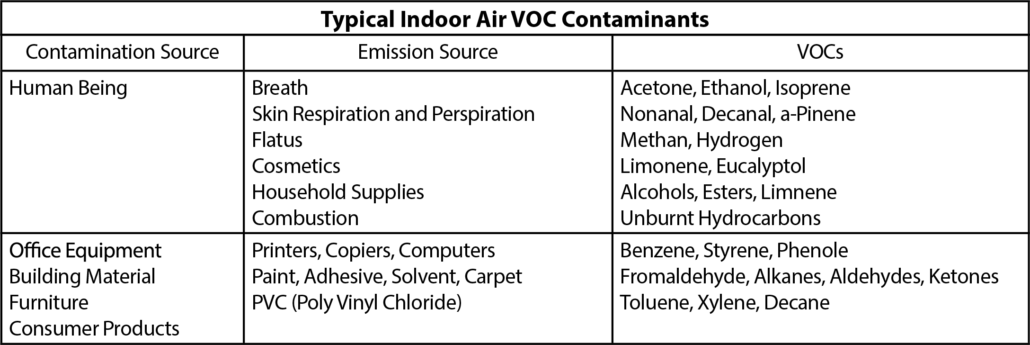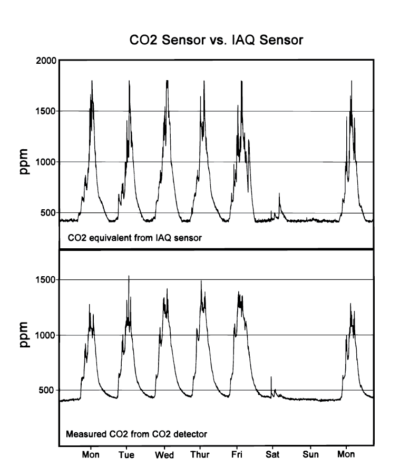Indoor Air Quality
Indoor air quality has been equated to CO2 levels for Demand Controlled Ventilation (DCV) applications in an effort to improve building health and reduce energy costs. The benefits of healthy and “green” buildings are well known today and progress in controlling ventilation rates to optimum values is still being made. One area that has received significant study and attention is the measurement of indoor air quality pollutants.
The traditional measurement of CO2 levels is often seen as limiting when compared to the total amount of volatile organic compounds (VOCs) present in the air that have a detrimental effect on the human perception of air quality. These indoor VOCs are hydrocarbons that originate mainly from bio-effluents (odors from human respiration, perspiration and metabolism) and vapors generated from building materials and furnishings. There are thousands of unique VOCs that may be present in indoor air that affect the air quality. The table below lists some of the more common VOCs and their source.





